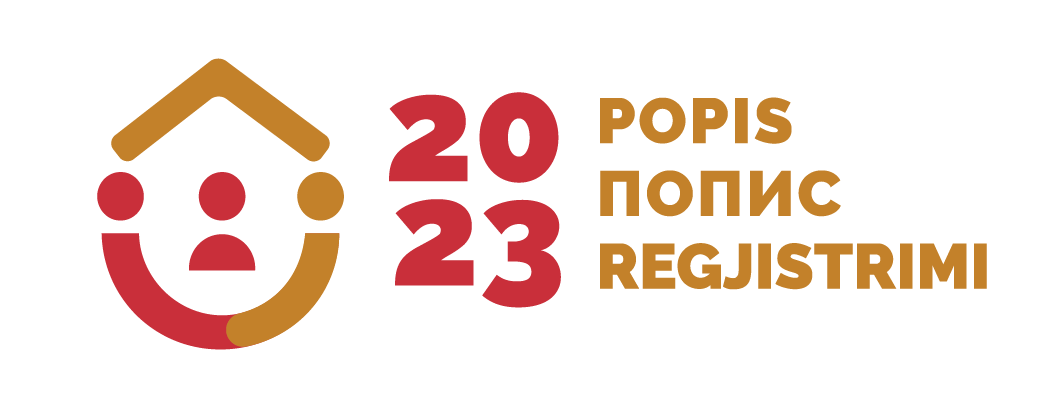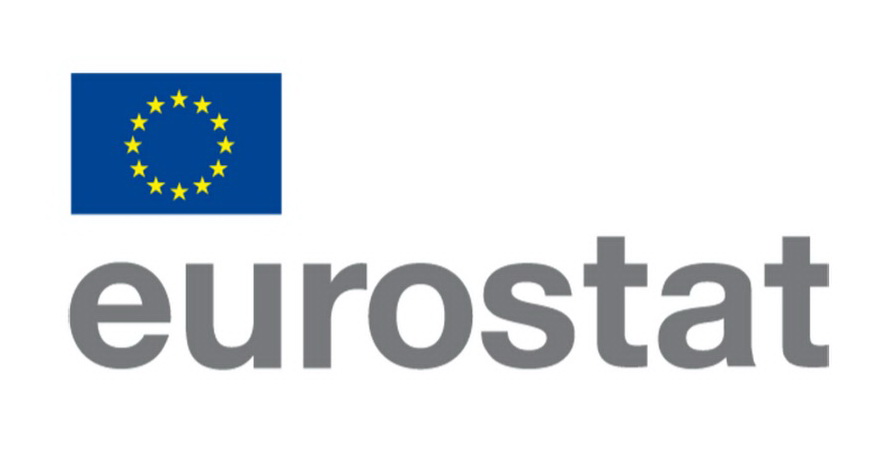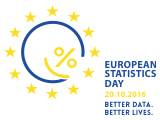| Category: | Demographic and social statistics |
| Area: | Household consumption |
| Survey / data collection: | Household budget survey |
| MONSTAT metadata |
|---|
| Reference metadata |
| 1. Contact |
| 2. Metadata update |
| 3. Statistical presentation |
| 4. Unit of measure |
| 5. Reference period |
| 6. Institutional mandate |
| 7. Confidentiality |
| 8. Release policy |
| 9. Frequency of dissemination |
| 10. Accessibility and clarity |
| 11. Quality management |
| 12. Relevance |
| 13. Accuracy and reliability |
| 14. Timeliness and punctuality |
| 15. Coherence and Comparability |
| 17. Data revision |
| 18. Statistical processing |
| 19. Comment |
Note: For any question on metadata, please contact MONSTAT metadata support.
| 1. Contact Vrh | |
| 1.1. Contact organization: | Statistical Office of Montenegro - MONSTAT |
| 1.2. Contact organization unit: | Statistics of Innovation, Household Consumption and ICT Survey Department |
| 1.2. Contact organization unit: | IV Proleterske 2, 81000 Podgorica, Montenegro |
| 2. Metadata update Top | |
| 2.1. Metadata last certified: | |
| 2.2. Metadata last posted: | 29 December 2023 |
| 2.3. Metadata last update: | 30/11/2022 |
| 3. Statistical presentation Top | |
| 3.1. Data description: | Purpose of HBS is to collect the data on: ? income, expenses and consumption of households; ? certain important indicators of living standards (equipment of households with durable consumer goods, housing conditions, type of heating, etc.); ? demographic characteristics of households; ? economic activities of household members; ? sociological characteristics household members; ? subjective positions of households related to certain important living issues. |
| 3.2. Classification system: | COICOP - Classification of Individual Consumption by Purpose NACE Rev. 2, ISCO 08, ISCED 2011, The country codes |
| 3.3. Sector coverage: | Not relevant |
| 3.4. Statistical concepts and definitions: | Household is considered to be: a) group of persons living together, spending their income on food and other essentials for living (multi-person household). Usually, this type of household comprises spouses, children, and other relatives and non-relatives (attendants, permanent workers in agricultural holdings, etc.); b) a person who lives alone in a separate housing unit, spending his/her income separately (one-person household). ?Living together? refers to mutual housing unit, i.e. combining to live in the same housing unit. Household members are considered to be: ? members of household temporarily absent (due to the military service, imprisonment less than 12 months) and they are covered by the survey; ? pupils and students, encountered in households members, regardless of the period of stay out of their households (in schools and on studies); ? daily and weekly migrants; persons working or studying in another place in the country or abroad, and having economic relation with households (they do not have their household in another place) in which they stay more than a month during the year are also included in household members and they are treated as a temporarily absent persons. Head of the household (reference person) is household member recognisable to other household members. The head of household is selected by the household members. This is often a person making important decisions or responsible for finances and wealth of household members. It is necessary to precisely select a household member. It is significant to group the household members by age. Adults - household members aged 15 and over. Children - household members aged up to 14 years. |
| 3.5. Statistical unit: | Households |
| 3.6. Statistical population: | 1) One-person household - single person living, spending and feeding individuall. 2) Multi-person household - community of persons living, feeding and spending received income together. |
| 3.7. Reference area: | Montenegro, Urban area , Other area. |
| 3.8. Time coverage: | Aimed at the survey integration, a theoretical compilation of sample and methodological harmonisation of Survey on Household Budgets of Workers' Families, Survey on Rural Households, and Survey on Income, Expenditures and Consumption of Households was done during 1983. Since then, the surveys are conducted under the standard name: Household Budget Survey (HBS).Since 1983, the HBS is conducted with annual periodicity on a reduced sample (380 households in the Republic of Montenegro). The HBS was harmonised with international standards and recommendations of Eurostat in 2005, thus enabling the international data comparability. The survey period has been changed since 2015 from one year to a perennial. |
| 3.9. Base period: | Monthly average on annual level. |
| 4. Unit of measure Top | |
| Euro and percentage. | |
| 5. Reference period Top | |
| There are three reference periods: on a monthly basis all purchases of products and services are recorded, consumption from own production; expenditures on consumption of semi-durable goods are recorded for the previous 3 months; expenditures on consumption of durable goods are recorded for the 12 previous months. Data is published annually as a monthly average. | |
| 6. Institutional mandate Top | |
| 6.1. Legal acts and other agreements: | The Law on Official Statistics and Official Statistical System (Official Gazette of Montenegro No 18/12 and 47/19) defines provisions for collection, processing, and dissemination of data. The Law provides to the Statistical Office legal powers to collect and access the data necessary for the implementation of Programme and Annual Plan. The Law gives a priority to the use of administrative data and right of access to individual data that are a result of survey of other official statistical producers. As an annex to legal provisions, Statistical Office has signed several memoranda on cooperation with administrative data providers. |
| 6.2. Data sharing: | Signed agreement on cooperation with the official statistical producers: 1. Customs Administration 2. Tax Administration 3. Ministry of Finance 4. Central Bank of Montenegro 5. Trilateral agreement (MONSTAT, Ministry of Finance, and Central Bank of Montenegro) International institutions: 1. EUROSTAT 2. UN organizations 3. IMF 4. World Bank |
| 7. Confidentiality Top | |
| 7.1. Confidentiality - policy: | Articles 53-60 of the Law on Official Statistics and Official Statistical System (Official Gazette of Montenegro No 18/12 and 47/19) provide a framework for protection, use, and transmission of confidential data. Statistical office has produced two comprehensive rulebooks that cover the procedures for individual data protection as well as keeping individual records. With purpose of the meeting legal framework on functioning of security system and statistical confidentiality there was adopted the Rulebook on Keeping Statistical Data by which Manner, Time, Technical Conditions and Organization of Statistical Data Storage to Prevent Their Destroying, Misappropriation, and Unauthorized Use is Regulated as well as the Rulebook on Contents and Manner of Keeping Records on Users of Individual Statistical Data by which contents and manner of keeping records on users of individual statistical data is regular. Pursuant to the Article 59, an access to the confidential data is limited to persons performing duties and tasks of official statistical producer and up to the stage the data are necessary for official statistical production. Persons that performs duties and tasks within official statistical producers must sign the statement on respecting the principle of confidentiality. Law on Official Statistics and Official Statistical System is aligned with the Regulation No 223/2009 and the Regulation (EU) 2015/759 from 29 April 2015 that also regulate confidentiality provisions. The Government of Montenegro adopted the Statement on Commitment of Confidence in Official Statistics (Commitment of Confidence). |
| 7.2. Confidentiality - data treatment: | The answers are used only for statistical purposes and as a summary data at the national level. |
| 8. Release policy Top | |
| 8.1. Release calendar: | The Law on Official Statistics and Official Statistical System (Official Gazette of Montenegro No 18/12, 47/19) stipulates that official statistical producers prepare, update, and publish Statistical Release Calendar. It is published on the website of Statistical Office not later than 20 December for the next year, for all official statistical producers that includes date of releasing statistical data. Any change in date of releasing in the Calendar is published in advance in accordance with the Procedure on Unplanned Revisions. |
| 8.2. Release calendar - access: | http://www.monstat.org/eng/page.php?id=12&pageid=12 |
| 8.3. User access: | General aim of official statistical producer is to meet the needs of users, and to make an access to statistical data to users in an understandable manner, simultaneously and under the same conditions. Statistical Office is obliged to produce and disseminate official statistics in objective, transparent and professional manner, so that all users are equally treated. |
| 9. Frequency of dissemination Top | |
| By 2015, the Household Budget Survey was conducted regularly, annually. The collection and publication period of the Household Budget Survey is from 2015, according to the Annual Plan and the Release Calendar of Statistical Surveys, from one year to several years of survey. Data are sent to Eurostat every five years, data are sent for 2010 and 2015. | |
| 10. Accessibility and clarity Top | |
| 10.1. News release: | Data are available on website of Statistical Office of Montenegro and paper form https://www.monstat.org/eng/page.php?id=255&pageid=71 |
| 10.2. Publications: | Statistical Office publishes the following regular publications: 1. Monthly Statistical Review, 2. Statistical Yearbook, 3. Montenegro in Numbers, 4. Annual Statistics of Transport, Storage and Connections, 5. Number and Structure of Business Entities. In addition to the above regular ones, Statistical Office publishes also additionally publications. Some of the most important additional publications are as it follows: 1. Women and Men in Montenegro, 2. Children in Montenegro, 3. The most often used statistical data, . All publication published by Statistixal Office are available at the following link: http://monstat.org/eng/publikacije.php |
| 10.3. Online database: | Data are available on the website of Statistical Office of Montenegro pdf and excel form http://www.monstat.org/eng/page.php?id=72&pageid=72 |
| 10.4. Micro-data access: | The Law on Official Statistics and Official Statistical System (Official Gazette of Montenegro No 18/12, 47/19) regulates rules under which external users can obtain an access to individual data for needs of research. Article 58 defines types of scientific and research organizations that can obtain such data. Providing individual data without identifier is possible only upon a written request of scientific and research institutions, with purpose of performing scientific and research activities as well as international statistical organizations and statistical producers from other countries. Research entity signs the agreement with Statistical Office, and it signs the statement on respecting the confidentiality principle. Official statistical producers keeps a separate records on users and purpose of using the statistical data given to these users. |
| 10.5. Other: | Data are sent to Eurostat. |
| 10.6. Documentation on methodology: domain: | The Methodology of Household budget survey are available on website on link https://www.monstat.org/uploads/files/apd/2021/Household%20budget%20survey_Methodology.pdf |
| 10.7. Quality documentation: | The Law on Official Statistics and the Official Statistical System ("Official Gazette of Montenegro" No. 18/12 and 47/19) defines the commitment to quality, which ensures that producers of official statistics in Montenegro work and cooperate in accordance with international principles of quality of the statistical system. In accordance with the ESS Quality Declaration, Article 338 of the Treaty on the Functioning of the EU, Regulations 759/2015 and 223/2009 and the European Statistics Code of Practice, the following documents are adopted: 1. Quality Strategy of the Statistical Office 2. Guide for the implementation of the Quality Strategy in the Statistical Office; 3. Implementation plan |
| 11. Quality management Top | |
| 11.1. Quality assurance: | Statistical Office has chosen the implementation of elements of TQM (Total Quality Management) model that foster development and improvement of functioning of: - Institution, - Official statistical result production, and - Individual. Within middle-term deadline, Statistical Office has chosen the TQM implementation through the following objectives: 1. Strong commitment to users and other interested parties, 2. Quality statistical processes and products, 3. Professional orientation of staff members, 4. Constant improvements, 5. Reduction of overburden of reporting units. |
| 11.2. Quality assesment: | Not available |
| 12. Relevance Top | |
| 12.1. User needs: | International users: - Eurostat, - World Bank, - UN organizations, - International Monetary Fund National users: - Ministries and other public administration bodies, -Local government, and -Other local government bodies. - Central bank, - Non-governmental organizations, - Students, -Researchers, - Media. |
| 12.2. User satisfaction: | The Statistical Office has adopted the Quality Management Strategy, the Guidebook to the Implementation of the Quality Management Strategy, as well as the Plan for the Implementation of the Quality Policy. In order to measure the degree to which fulfills obligations towards users and within the new quality policy, the Statistical Office conducted User satisfaction survey. The results of the survey are available on the Statistical Office website, link: http://monstat.org/uploads/files/2.%20Izvjestaj%20o%20zadovoljstvu%20korisnika%20ENG%20(Autosaved).pdf |
| 12.3. Completeness: | Household budget survey (HBS) has been harmonized with International standards and recommendations of EUROSTAT, which enables international comparability of data. |
| 13. Accuracy and reliability Top | |
| 13.1. Overall accuracy: | Household budget survey covers persons living in households. As the results are based on a sample of population they are subject to the usual types of errors associated with sampling techniques and interviews, such as: sampling errors, non-sampling errors, measurement errors, processing errors, and non-response. |
| 13.2. Sampling error: | Sampling errors are the characteristic of all sample surveys and are caused by observing the sample as part of the population. The size of sample error can be controlled with the sample size and sample design. However, for some minor domains (levels or groups of data) that have an insufficient number of units in a sample, large sample errors lead to unreliable results. The measure of precision of the most important indicators of the economic activity of the population can be expressed as a standard error. |
| 13.3. Non-sampling error: | Non-sampling errors are: over-coverage, under-coverage, measurement errors, processing errors, editing and imputation of data and non-response. |
| 14. Timeliness and punctuality Top | |
| 14.1. Timeliness: | Timeliness of final results: T + four and a half months after the end of the reference period. |
| 14.2. Punctuality: | Deadlines of dissemination of the HBS data at the website are defined in the Statistical Release Calendar. Indicator TP3 (punctuality) is 59, i.e. the difference between the planned and the actual publication is fifty nine days. That means that the Release are published fifty nine days after the scheduled date foreseen in the Statistical Release Calendar. |
| 15. Coherence and Comparability Top | |
| 15.1. Comparability - geographical: | One of main survey aims is to apply international standards in defining Total consumption so that this category can be compared with the same category in other countries, especially European countries. |
| 15.2. Comparability over time: | The Household budget survey is conducted continuously i.e. households are interviewed continuously throughout the year from 2005 to 2015. The survey period has been changed from one year to a perennial. Until 2011, the data from the Census of Population, Households and Dwellings 2003 were used for data weighting. Since the beginning of 2011, data from the Census of Population, Households and Dwellings 2011 have been used for weighting data. |
| 15.3. Coherence - cross domain: | Not relevant |
| 15.4. Coherence - internal: | Not relevant |
| 17. Data revision Top | |
| 17.1. Data revision - policy: | Statistical Office has adopted the revision policy and it is available on the website http://www.monstat.org/eng/page.php?id=1411&pageid=1411 |
| 17.2. Data revision - practice: | Not available |
| 18. Statistical processing Top | |
| 18.1. Source data: | The Household Budget Survey is statistical survey based on sample. |
| 18.2. Frequency of data collection: | Monthly |
| 18.3. Data collection: | Data are collected on paper form. The HBS applies the method of keeping diary (D-1), and method of interviewing households (interview method) on the basis of questionnaire (forms P-1, P-2, P-3 and questionnaire for non- response NO-4). |
| 18.6. Adjustment: | Not relevant |
| 19. Comment Top | |







